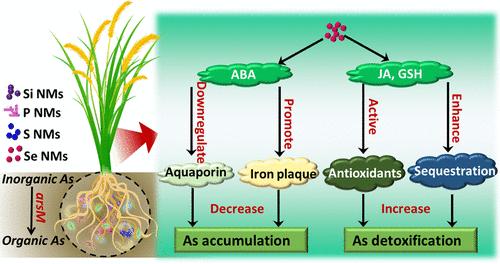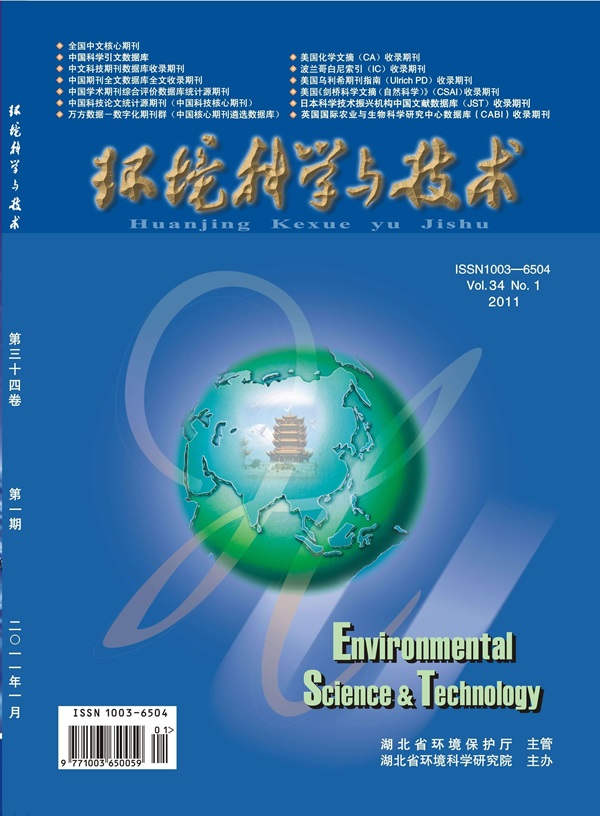Metalloid Nanomaterials Alleviate Arsenic Phytotoxicity and Grain Accumulation in Rice: Mechanisms of Abiotic Stress Tolerance and Rhizosphere Behavior
IF 10.8
1区 环境科学与生态学
Q1 ENGINEERING, ENVIRONMENTAL
引用次数: 0
Abstract
Nanoenabled agriculture technology exhibits potential in reducing arsenic uptake in rice; however, a systematic understanding of the rice–soil–microorganism process of nanomaterials (NMs) is lacking. Soil amendment of metalloid NMs, including SiO2, hydroxyapatite, S0, and Se0 at 10–100 (0.1–5.0 for Se NMs) mg/kg, increased rice biomass by 76.1–135.8% in arsenic-contaminated soil (17.0 mg/kg) and decreased arsenic accumulation in plant tissues by 9.3–78.2%. The beneficial effects were nanoscale-specific and NMs type- and concentration-dependent; 5 mg/kg Se NMs showed the greatest growth promotion and decrease in As accumulation. Mechanistically, (1) Se NMs optimized the soil bacterial community structure, enhancing the abundance of arsM by 104.2% and subsequently increasing arsenic methylation by 276.1% in rhizosphere compared to arsenic-alone treatments; (2) metabolomic analyses showed that Se NMs upregulated the biosynthesis pathway of abscisic acid, jasmonic acid, and glutathione, with subsequent downregulation of the arsenic transporter-related gene expression in roots by 42.2–73.4%, decreasing the formation of iron plaque by 87.6%, and enhancing the arsenic detoxification by 50.0%. Additionally, amendment of metalloid NMs significantly enhanced arsenic-treated rice yield by 66.9–91.4% and grain nutritional quality. This study demonstrates the excellent potential of metalloid NMs for an effective and sustainable strategy to increase food quality and safety.

求助全文
约1分钟内获得全文
求助全文
来源期刊

环境科学与技术
环境科学-工程:环境
CiteScore
17.50
自引率
9.60%
发文量
12359
审稿时长
2.8 months
期刊介绍:
Environmental Science & Technology (ES&T) is a co-sponsored academic and technical magazine by the Hubei Provincial Environmental Protection Bureau and the Hubei Provincial Academy of Environmental Sciences.
Environmental Science & Technology (ES&T) holds the status of Chinese core journals, scientific papers source journals of China, Chinese Science Citation Database source journals, and Chinese Academic Journal Comprehensive Evaluation Database source journals. This publication focuses on the academic field of environmental protection, featuring articles related to environmental protection and technical advancements.
 求助内容:
求助内容: 应助结果提醒方式:
应助结果提醒方式:


